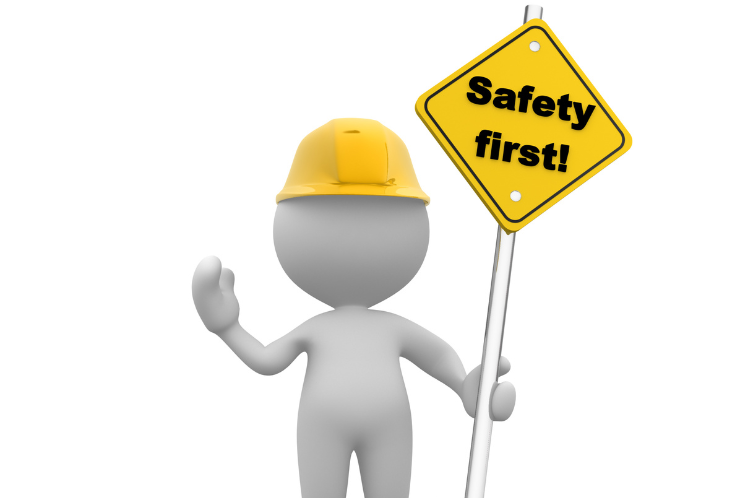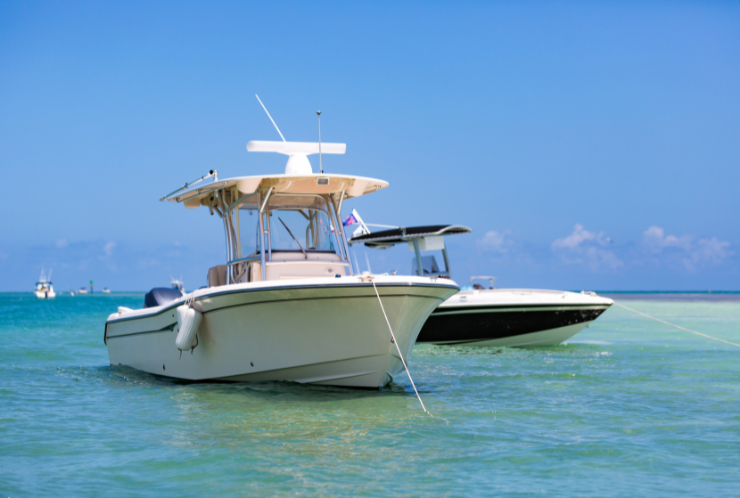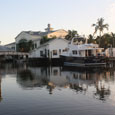
Posted by
A big part of enjoying a day on the water is abiding by boating safety rules and best practices. As such, you might consider filing a float plan before heading out to sea. What is a float plan? A float plan is more than a rundown of your planned excursion. In fact, it could be something that saves your life.
What is a float plan? In the most simple terms, a float plan is a document that includes important information about your boating trip. It might include details like the name and description of your vessel, the people on board, the point of origin and intended destination, and the dates and times of your outing.
You might consider giving your float plan to a staff member at the marina or sharing it with a close friend or family member. Let’s get into the details about what is a float plan, making a float plan, who to share it with, and more boating safety information.
What is a Float Plan?
So you may think to yourself, what exactly is a float plan and why you may need one? Let’s put it this way: when you go on a trip, you’ll most likely inform someone where you’re going and when you’ll be back, right? The same goes for boating excursions, except with a few more details. Filing a float plan is all about the safety of all passengers, especially in an emergency and unexpected situation.
A float plan provides authorities with a detailed snapshot of where to look for you if you do not reach your planned destination. There is no formal requirement for float plans; simply write down the location where you’re headed, who is on board with you, and when you plan to be back. It’s as simple as going on a road trip and texting your loved one when you’ve arrived.
Always do what you say you’re going to do and inform your contact person when you safely arrive. A float plan should never be left open, as it leaves a lot of room for uncertainty and additional worries. Think of a float plan as a precautionary measure. You will have the comfort of knowing that if something unexpected happens to you out on the water, you will be found and rescued.
What is Included in a Float Plan?
If you’re going to be on the water for a long time, file your float plan with someone you trust, like a relative or a friend, at the very least, a trusted acquaintance at the local marina. It’s important to share that information with someone who can call the US Coast Guard if an emergency occurs, but keep in mind you shouldn’t send it directly to the US Coast Guard. Your float plan should include:
- Boat description, including plate numbers of the vehicle tow and trailer
- The number of passengers onboard
- The duration of the excursion
- Addresses and phone numbers of your passengers
- Travel location, including general directions
You should include the boat’s dimensions, color, brand, model, engine power, and boat identification number. In addition, it is essential to state where your trip began and where you intend to go. Be specific about each passenger on the boat with you regarding their age, sex, and any medical conditions they may have. Try to be as detailed as you can when it comes to providing multiple contact information, such as mobile phone numbers and home addresses. Taking preventative measures is something you’ll never regret.

How Do You Make a Float Plan?
Creating a float plan doesn’t have to be anything formal or complicated. You can prepare it in any format you like – typed or handwritten. You’re simply sharing detailed information with someone about your trip, your boat, and your passengers. It is essential to be specific about when you intend to return, especially if you’re going on a more extended voyage; this way, if you don’t arrive as expected, someone will be able to contact the authorities. A float plan filed with the proper person could ultimately save your life.
You can obtain a template or blank document from most boat clubs and safety agencies. However, if you’re unsure where to begin and what information you need to provide, you can fill out the U.S. Coast Guard form found here. After completing it, don’t directly submit it to the U.S. Coast Guard. Instead, share it with trusted individuals in either digital or hardcopy format. Be sure to give them the information about who to contact and what to do if you don’t respond on time.
In most cases, the boat operator is the person who files the float plan. Still, all passengers should understand the significance of communicating where you’re headed and how long you anticipate being on the water. Therefore, do not hesitate to ask the vessel operator if they have filed a float plan with a reliable individual. In addition, it’s always a good idea to include a picture of the boat in your float plan.
Who Should Be Given a Float Plan?
You can give your float plan to anyone you know who will call the authorities if you go missing. That could be a trusted friend, a family member, a neighbor, a co-worker, or a marina dock master. Give yourself proper time to make sure and fill out the float plan with as much detail as possible. Being proactive and planning are essential when it comes to staying organized.
Your trusted contacts should be aware of their responsibilities, as you depend on them to contact the Coast Guard if anything goes wrong or if you don’t arrive as scheduled. Remember that if you need to change your itinerary halfway through, the guardians of your float plan should be informed right away since they should be kept in the loop. If you forget to get in touch with your float plan contact, you may cause unnecessary stress and worry to others. If they don’t hear from you, they might contact the authorities and send a rescue team to look for you even though it’s not necessary. Finally, always do a closing check-in upon arrival. You know you made it safely, but your family and friends don’t.
Additional Boating Safety Tips
Whenever your float plan is finalized, it might seem you’ve covered everything. However, before heading out on the water, there are a few additional steps, such as inspecting your boat for damage and making sure you have safety equipment on board. When it comes to safety, there are many things to consider.
- Equipment – This included protection gear such as lifejackets and throwable devices, fire extinguishers, repair equipment, a well-stocked first aid kit, and communication equipment such as cell phones or VHF radio.
- Mechanical – Make sure your navigation equipment is updated, your engine works properly, and all bilge pumps are clear of debris.
- Items to check – Ensure that batteries are charged, you have enough fuel for the trip, there are no oil or water leaks, all fluid levels are full, and there is no damage on your boat.
- Communicate effectively – Let your passengers know where they could find the nearest first aid kit, explain where the personal floating devices and fire extinguishers are, make sure they know how to operate the radio, and go over storm weather procedures.
Before you depart, always check the weather, especially for lightning, and have emergency supplies on your hands, such as visual distress signals and flashlights. In addition, you should also be careful not to overload the boat with too many people or equipment. Overloading your vessel can lead to unbalance, which could cause an accident. Last but not least, use your common sense when you’re operating your boat. In the same way, rules apply when driving a car; it’s essential always to pay attention, remain alert, and be sure to follow the speed limit. By doing so, you and your passengers will be kept safe. After all, boating is all about enjoying yourself, isn’t it?

Enjoy a Safe Day on the Water from Port Sanibel Marina
Boating safety is important to the staff at Port Sanibel Marina. Consider sharing your float plan with Port Sanibel Marina staff to add an extra element of precaution to your boating experience.
As a full-service marina, we want all boaters using our facilities to stay safe and have a great day on the water. This means Port Sanibel Marina, located in Fort Myers, offers everything you need for a fun day enjoying the Gulf of Mexico. From marina docking to boat rentals, you’ll find what you need to truly make the most of your time on the water. Amenities include waterfront dining, shopping, cruises, charters, and much more.
Are you ready to enjoy what makes Southwest Florida special from Port Sanibel Marina? Give the marina a call at (239) 437-1660 or reach out online for additional information.











